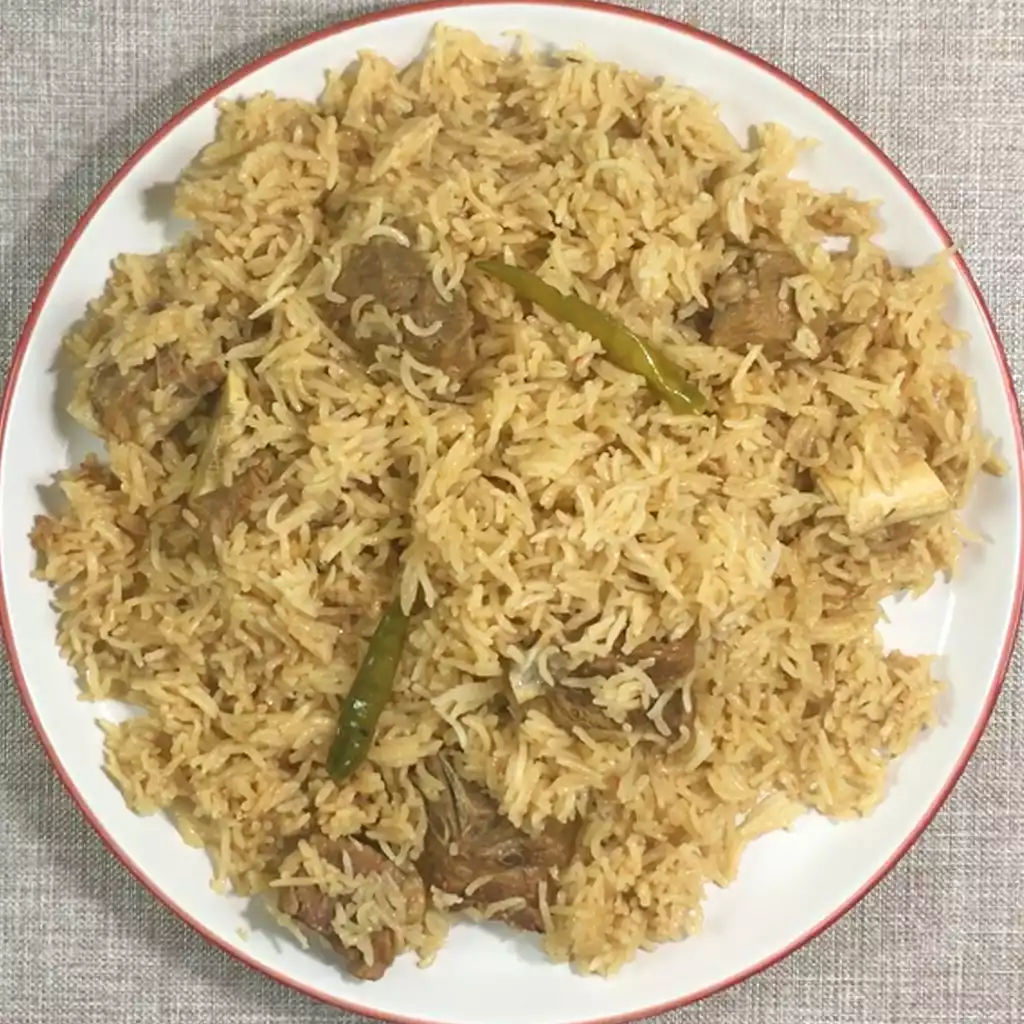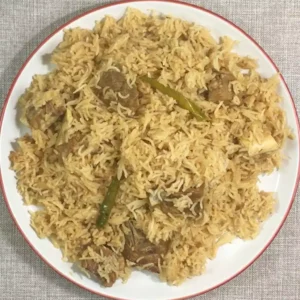
If you’re looking to tantalize your taste buds with a dish that’s both comforting and bursting with flavor, then mutton pulao is just the recipe you need.
Originating from the rich culinary heritage of South Asia, mutton pulao is a classic rice dish that combines tender mutton or lamb with fragrant spices and long-grain rice.
Don’t be intimidated by its exotic name or the list of ingredients – this recipe is surprisingly simple to make, even for beginners in the kitchen.
Unlike more complicated biryanis, mutton pulao offers a simpler yet equally satisfying alternative. It’s the perfect choice for a cozy family dinner or a gathering with friends. Plus, once you master the basics, you can easily customize this dish to suit your taste preferences, whether you prefer it mild or spicy.
While mutton pulao may require a bit of time and patience, the end result is well worth it. The slow cooking process allows the flavors to meld together, creating a dish that’s aromatic, flavorful, and downright delicious.
Expert Tip: Experiment with different varieties of rice, such as basmati or jasmine, for a unique twist on this classic dish.
Mutton or Lamb: Mutton or lamb forms the heart of this dish, providing a rich and savory flavor that pairs perfectly with the fragrant spices and rice.
Ginger and Garlic: These aromatic ingredients add depth and complexity to the dish, enhancing its overall flavor profile.
Water: Used to cook the mutton or lamb until tender, water helps create a flavorful stock that infuses the meat with deliciousness.
Spices: This combination of spices adds warmth, aroma, and a hint of heat to the dish, elevating its taste to new heights.
Rice: Long-grain rice serves as the base of the dish, soaking up all the flavorful juices from the mutton and spices.
Onions: Onions provide sweetness and depth to the dish, balancing out the spices and adding a caramelized richness.
Garlic Paste, Green Chillies: These ingredients add a kick of flavor and heat to the dish, enhancing its overall complexity.
Oil: Used for sautéing the onions and cooking the dish, oil adds richness and helps bring out the flavors of the other ingredients.
Expert Tip: Don’t skip the step of soaking the rice – this helps ensure that each grain cooks evenly and prevents them from sticking together.
Expert Tip: For extra flavor, marinate the mutton or lamb with yogurt and spices for a few hours before cooking.
While traditionally mutton or lamb is used in mutton pulao for its rich flavor and tender texture, you can certainly substitute beef if you prefer. Just keep in mind that cooking times may vary, so adjust accordingly.
Yes, you can make mutton pulao in a pressure cooker for a faster cooking time. Simply follow the same steps but adjust the cooking times according to your pressure cooker’s instructions.
Yes, you can make mutton pulao in advance and reheat it when ready to serve. Store any leftovers in an airtight container in the refrigerator for up to 3-4 days.
Yes, you can freeze mutton pulao for longer storage. Allow the dish to cool completely before transferring it to freezer-safe containers or bags. It can be stored in the freezer for up to 2-3 months. Thaw overnight in the refrigerator before reheating.
The level of spiciness in mutton pulao can be adjusted to your taste preferences. If you prefer a milder dish, you can reduce the amount of crushed chillies and green chillies used in the recipe.
Here are some more recipes for you to enjoy! If you my recipes don’t forget to rate and leave a comment.
If you have any recipe suggestions, please do not hesitate to ask me. A great way to stay in contact with me is through Instagram, Facebook, Twitter and YouTube. Don’t forget to tag me @CookwithNabeela in your recipe photos!

Subscribe now to receive my latest recipes directly in your inbox. Stay up-to-date and never miss out!

I love to cook! I want to share with you my favourite, delicious family-friendly recipes. I want to inspire you to create fantastic food for your family every day.
Latest comments (1)
For how many Grams it takes upto 588calories??